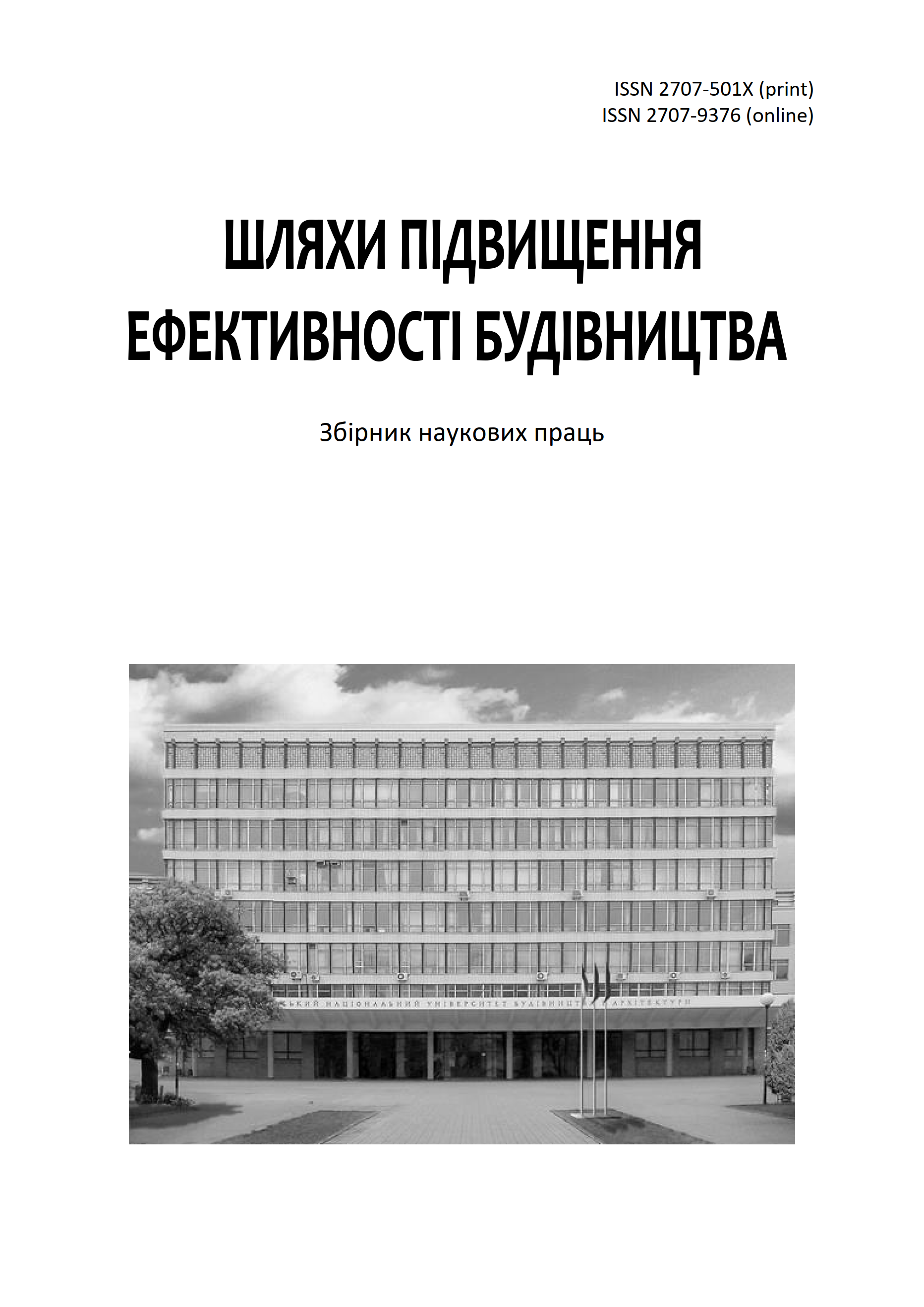Risk management for optimizing management decision-making in the context of public-private partnership
Keywords:
risk management, optimization, management decision-making, public-private partnership, construction enterprise, private sector, public sectorAbstract
The article reflects that in modern business conditions, public-private partnership (PPP) is gaining increasing popularity in the implementation of large-scale infrastructure projects. This cooperation format offers significant advantages for both public and private sectors but also carries certain risks. PPP risks can be divided into two main groups: project-related risks and partner-related risks. Types of risks include technical risks, financial risks, regulatory risks, political risks, and contractual risks. Partner-related risks include reputation risks and behavioral risks.
To optimize management decision-making process in the context of PPP, it is important to use methods of quantitative and qualitative risk analysis, as well as the principles of rational decision-making. It is necessary to consider the interests of all stakeholders since the success of PPP depends on effective cooperation and mutual understanding between the public and private sectors. Applying risk-informed management decision optimization methods allows minimizing negative consequences and maximizing positive project results. The authors of the article explore theoretical and practical aspects of risk management in public-private partnership (PPP) to optimize management decision-making. The authors propose an integrated PPP risk management model that considers both quantitative and qualitative factors. The method of quantitative risk assessment is used, which allows determining the probability and impact of risks on the project. A method of resilience analysis to risks is proposed, which allows determining how resilient the project is to various types of risks. Recommendations for PPP risk management are provided, aimed at optimizing management decision-making.
References
Mulyani, S. (2021). Critical success factors in public-private partnership. Journal of Accounting Auditing and Business-Vol, 4(1), 81-86.
Tsimoshynska, O., Koval, M., Kryshtal, H., Filipishyna, L., Arsawan, I., & Koval, V. (2021). Investing in road construction infrastructure projects under public-private partnership in the form of concession. Naukovyi Visnyk Natsionalnoho Hirnychoho Universytetu, 2(2), 184-192.
Liu, T., Mostafa, S., Mohamed, S., & Nguyen, T. S. (2021). Emerging themes of public-private partnership application in developing smart city projects: a conceptual framework. Built Environment Project and Asset Management, 11(1), 138-156.
Gunduz, M., & Abdi, E. A. (2020). Motivational factors and challenges of cooperative partnerships between contractors in the construction industry. Journal of Management in Engineering, 36(4).
Prodius, O. I., & Zaporozhska, A. M. (2022). An innovative project development in the construction industry of Ukraine. Economics: Time Realities, (4).
Trach, R., Lendo-Siwicka, M., Pawluk, K., & Połoński, M. (2021). Analysis of direct rework costs in Ukrainian construction. Archives of Civil Engineering, 67(2).
WHAT ARE PPPS?. World Bank. URL: https://ppp.worldbank.org/ public-private-partnership/about-us/about-public-private-partnershipshttps.
Frank Beckers, Uwe Stegemann. A smarter way to think about public–private partnerships. McKinsey. URL: https://www.mckinsey.com/ capabilities/operations/our-insights/how-can-the-private-and-public-sectors-work-together-to-create-smart-cities.
Tugai O.A., Hryhorovskyi P.Ye., Khyzhniak V.O., … Chernyshev D.O. Organizational and technological, economic quality control aspects in the construction industry: collective monograph. Lviv-Toruń: Liha-Pres, 2019. 136.
Nikolaiev V.P., Hryhorovskyi P.Ye., Khyzhniak V.O., … Molodid O.S. Technical and economic aspects of real estate properties: collective monograph. Lviv-Toruń: Liha-Pres, 2019. 124 p.
Stetsenko, S.P. (2021) The interrelation of digital technologies and organizational and economic mechanisms in construction: adaptation to change management. International Review, Special Issues, No. 1, Part I, p. 21-31.
Reznik, N. at al. Systems Thinking to Investigate the Archetype of Globalization. Lecture Notes in Networks and Systemsthis link is disabled, 2022, 486, pp. 123–140 Springer International Publishing https://doi.org/10.1007/978-3-031-08087-6_9
Ryzhakova G., Pokolenko, V., Omirbayev, S., ... Kapustian, M.: Modern structuring of project financing solutions in construction, 2022 IEEE International Conference on Smart Information Systems and Technologies (SIST). (2022).
Zeltser, R.Ya. Digital Transformation of Resource Logistics and Organizational and Structural Support of Construction. Nauka i innovatsii. 2019. V 15 (5). Р. 38–51.
Stetsenko S., Sorokina L., Izmailova K. (2021) Model of a Company Competitiveness Control by Means of Artificial Intelligence Tools International Journal of Emerging Trends in Engineering Research, 9(2), pp. 60 – 65.
Stetsenko S.P., Tytok V.V., Emelianova O.M. Management of Adaptation of Organizational and Economic Mechanisms of Construction to Increasing Impact of Digital Technologies on the National Economy. Journal of Reviews on Global Economic. 2020. № 9. Р. 149–164.
Downloads
Published
How to Cite
Issue
Section
License

This work is licensed under a Creative Commons Attribution 4.0 International License.
Authors who publish with this journal agree to the following terms:
- Authors retain copyright and grant the journal right of first publication with the work simultaneously licensed under a Creative Commons Attribution License that allows others to share the work with an acknowledgement of the work's authorship and initial publication in this journal.
- Authors are able to enter into separate, additional contractual arrangements for the non-exclusive distribution of the journal's published version of the work (e.g., post it to an institutional repository or publish it in a book), with an acknowledgement of its initial publication in this journal.
- Authors are permitted and encouraged to post their work online (e.g., in institutional repositories or on their website) prior to and during the submission process, as it can lead to productive exchanges, as well as earlier and greater citation of published work (See The Effect of Open Access).

